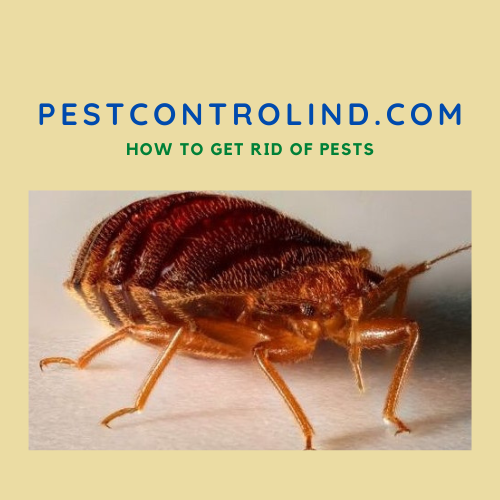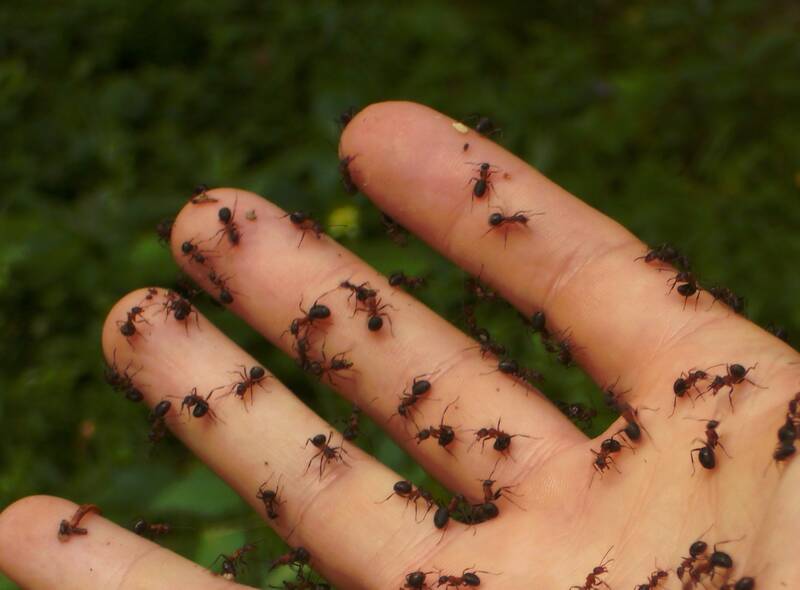Ant bite can be so painful that you feel like you are being pierced by a sword. The treatment of the ant bite is generally basic, even if sometimes it requires sustained medical treatment because of allergy.
We will see in this article all the causes and consequences of several ants that bite in the world.
I. What Does It Look Like When An Ant Bites You?
1. Ant Biting
Ant bites cause swelling, and redness and what usually differentiates them from other insect bites is the presence of pus. It may even become a blister.
In most cases of ant bites, they can be treated easily. However, some people have severe allergic reactions, which can progress to a life-threatening anaphylactic allergic reaction requiring urgent medical attention.
Severe reactions can affect the entire body and usually occur violently, often within minutes. If left untreated, these severe reactions can quickly become fatal.
2. The most painful insect bite in the world
This is the bite of the so-called bullet ant because of its strong pain like a bullet fired from a weapon. Its scientific name is Paraponera clavata.
It has the ability to inject with its stinger up to 13 drops of its toxic venom per second.
It is considered by insect bite specialists to be the most painful insect bite on Earth.
This so-called bullet ant (Paraponera clavata) is a relatively common insect in the riverine forests of Venezuela, Bolivia, Brazil, and Costa Rica, with a sting at least 30 times more painful than that of a wasp.
There are also other ants in the world that are also ranked at the top of the most painful insect bites, even if they are slightly less devastating. Such as the red harvest ant (Pogonomyrmex Barbatus) which lives in the southwestern United States, the Acacia cornigera ant (Pseudomyrmex Ferruginea), and the fire ant (Solenopsis Invicta).
3. Symptoms of an allergic reaction to an ant bite
For most cases of an ant bite, the reaction is a local reaction at the site of the bite and is short-lived, with redness and inflammation, followed by pain and itching.
Generally, the reaction lasts a few hours, although some may last longer. For other people, their immune system reacts abnormally and causes allergic reactions that can spread to other parts of the body. Sometimes these reactions can be life-threatening.
These severe reactions are a medical emergency that can happen very quickly. They are called anaphylaxis or anaphylactic shock and can include severe symptoms such as
- Headache
- Swelling of the throat and tongue
- Stomach cramps, nausea, or diarrhea
- Itching and hives over most of the body
- Loss of consciousness
- Shortness of breath and tightness in the chest
- Dizziness
- Rapid decrease in blood pressure
- Shock
- Rolling or swelling of the tongue
4. Treatment of ant bite medically
People with a known hypersensitivity to insect stings and bites should always have a medicine cabinet with an epinephrine syringe.
They should use it as soon as possible after a bite and seek medical attention immediately.
Those with a history of anaphylaxis or a known allergy to insect bites should wear identification such as an alert bracelet.
Allergic reactions are treated with intravenous antihistamines; anaphylaxis is treated with parenteral adrenaline, intravenous fluids, and vasopressors if necessary.
Stings, if present, should be removed as soon as possible. Suggested methods include scraping with a blunt edge (e.g., the edge of a credit card, the blunt edge of a scalpel, or a knife).
Pain, burning, and itching can be reduced by placing an ice cube wrapped in a cloth over the bite.
Usually, the signs and symptoms of a bite or sting disappear within a day or two.
II. Home remedies for ant bites
We are not all the same, so reactions to the bite of an ant are varied. Sometimes the area swells and hurts.
When you scratch it, you make the wound prone to infection, so it is best not to do so.
It is advisable to wash the bite with soap and warm water and disinfect it with hydrogen peroxide, alcohol, or Betadine. This hygienic measure will help reduce stinging and pain.
When it comes to benign bites that do not require a visit to the doctor, but nevertheless require a simple home treatment to relieve and heal the skin quickly. Here are some grandmotherly remedies to relieve the pain of ant bites.
1. Honey
This great natural remedy can treat all bites from mosquitoes, bees, fleas, bed bugs, and other insects, including the ant. Honey, among its many properties, also has great antiseptic and antibiotic power.
To treat ant bites with honey, we cover all our pimples and bites with a small amount of this natural liquid and let it dry. Then we remove the honey with warm water.
If the sting is that of a bee, paradoxically, the honey will also serve to free the skin of the sting. For this remedy to be effective, it is advisable to use dense rather than liquid honey.
2. Aloe Vera
The Aloe vera plant has unsuspected medical benefits. In the case of an ant bite, it can reduce the swelling of the bite, relieve itching and heal any wounds caused by the insect or those caused by scratching oneself.
The treatment of the ant bite with Aloe vera is really simple, that it is enough only to have a stem of the plant and to extract its sap, opening it horizontally. Then, after washing the place of the sting with soap and water, apply the extracted juice on the sting or bite, and cover it with gauze.
3. Lemon
You can squeeze the juice of half a lemon or a whole lime and soak a cotton ball in it. Then apply it to the bite and, although it may sting (especially if you’ve scratched yourself), it will be very helpful.
You can also rub the lemon directly on the bite after cutting it in half. With this remedy, you will reduce the bitting and disinfect any wounds, which will speed up the healing of the bite.
4. Mud
This is a classic for treating ant bites. Best of all, it’s easy to find anywhere you’re likely to get stung or bitten by an ant, like in a field or garden.
You just need to take a lot of mud and apply it to the bite.
When the mud is dry, remove it with water and wash the bite thoroughly with soap to prevent it from becoming infected.
Remember that you can make your own mud by mixing water with soil.
5. Baking soda
This is one of the most widely used home remedies to treat and relieve insect bites. Since baking soda has many other home benefits, you should always have at least one box at home.
If you want to reduce inflammation and relieve itching, mix a teaspoon with a little water and apply it to the bite. Wait 15 minutes and rinse thoroughly with water.
III. How to avoid being stung by an ant
We have seen that ant bites can sometimes cause great discomfort, especially if they are red ants, so it is essential to take certain precautionary measures to prevent the attack of these insects.
Avoid walking on ant hills, and ant colonies. If there is one in your garden, get rid of it as soon as possible if it belongs to a dangerous species.
Protect yourself before going outside. If you’re going to the field or anywhere these insects may be, wear a long-sleeved shirt, long pants, socks, and boots to keep them from climbing up and biting you.
Spray your clothes with insect repellent. This will help keep ants away from you.
IV. Some common ants biting
There are more than 15 000 species of ants in the World. We will see the five most common species, which could eventually bite you.
1. The black ant (lasius niger)
It is black in color with brown or gray reflections, size varies from 3 to 5mm, and lives from 1 to 3 years. The queen of the lasius niger can live up to 15 years before being replaced by a new queen. The mating is done in the air and the males die right after.
Black ants have the characteristic of raising aphids in gardens in exchange for their honeydew. Also, they can bite but have no sting to sting.
2. The pharaoh ant (Monomorium pharaonis)
Smaller than the black ant, measuring between 1 and 2 mm, its color is yellow tending to brown. The size of its queen can go up to 6 mm on average. An ant farm can tolerate several queens at the same time, each in its own corner. Mating is done in the air.
3. the silver ant (linepithema humile)
Brown in color, measuring 1 to 2 mm long. The size of the queen is 5 to 7 mm. The mating is done in the air. They do not sting but can bite.
4. the carpenter ant (componatus app)
Of variable color and size ranging from 3 to 15mm. Mating is also done in the air. They prefer to live in wooden houses with high humidity. They are a danger to the structures of houses and buildings.
5. The red ant
The name red ant is given to several different species in the world. The most common is the so-called European red ant or Myrmica rubra. Several queens of the Myrmica rubra can live in harmony in the same colony.
It measures between 2 to 5 mm long for the worker and 6 mm for the queen.
The Myrmica rubra has a sting with which it stings.

